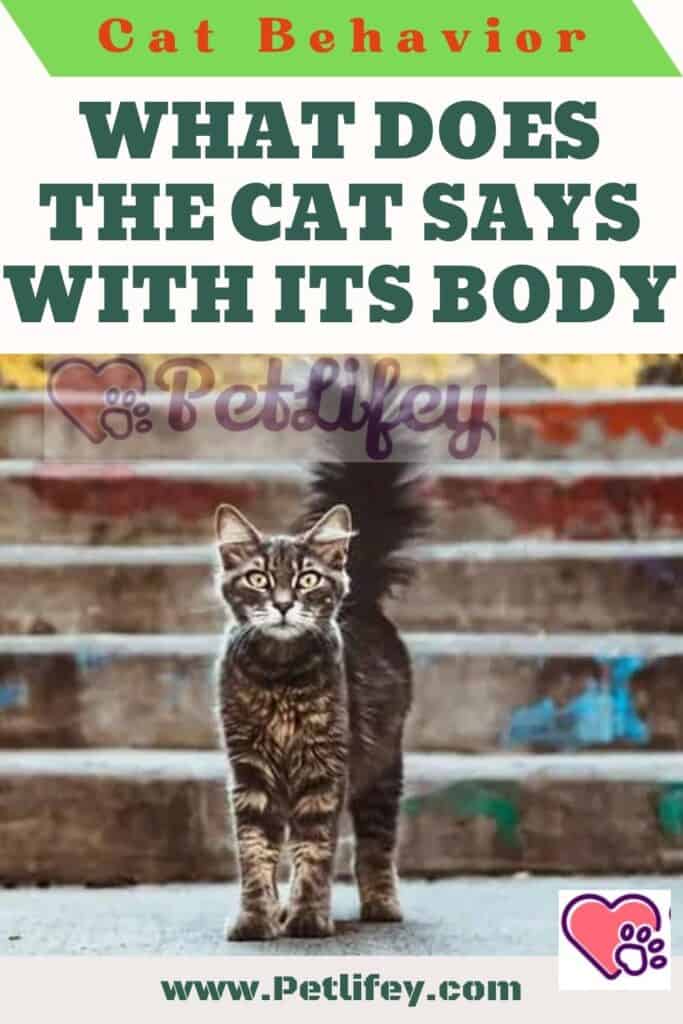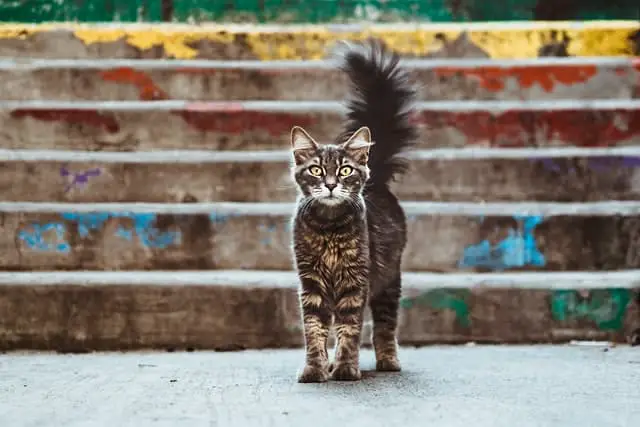The cat’s communication includes body postures and eloquent gestures on its face that help to understand what the cat is trying to say without words.

Cats cannot speak. However, like dogs, felines communicate with their bodies. The cat uses the body postures and gestures of its face to express that it is calm and relaxed, but also to indicate that it is under stress, that it prefers to be left alone. And even that it is scared or about to suffer an attack of cat aggressiveness. Here is a simple (but eloquent) feline guide to what the cat tells us with its body.
The cat communicates with its body: feline positions that speak
Cats do not speak but they do communicate their intentions to other felines and humans with their bodies
The cats use their body to communicate with other cats, but also with people. The body postures that the animal adopts are very eloquent, and vary depending on what the furry companion wants to say. Therefore, knowing what the cat says through its body is the first step in trying to understand the – sometimes labelled as enigmatic – felines as they deserve.
The Cats communicate through body postures they adopt. To do this, they use their tail, the position of their ears, their back and even the location of their head. Felines have a wide range of body positions and facial expressions , which they use to transmit information to fellow humans and humans.
Some of the body postures that the cat adopts express its desire to fight -the least- or, quite the opposite: they symbolize its lack of interest in fighting with another cat. On other occasions, the feline reflects its desire to receive caresses and affection from its masters or other peers. But also fear, fear of the proximity of a possible threat.
So how do you correctly interpret this eloquent body language? Here is a simple feline guide to understand what the cat tells us with its body .
Calm and friendly cats, how do they express it with the body?
A cat that is calm and relaxed will show it in the following way: the feline will be sitting or lying -on the side or on its belly-, asleep or enjoying a dream.
A serene walking cat will have its back horizontal, almost parallel to the ground. For its part, a cat that plays also expresses confidence and calm. While the peculiar and seductive purr of the cat is another expressive feline signal of safety.
Cats on alert, how do they communicate with the body?
A cat in a state of alert , which notices a possible threat capable of breaking its climate of tranquility, will also express it in a convincing way through its body. If you are lying down, your head tends to gain altitude, so that the range of your field of vision increases .
The ears of the vigilant cat make small movements on its head, in order to better recognize sounds and capture their origin. In addition, these extraordinary feline hearing aids can be stretched backwards or forwards.
The eyes of the feline that perceives a possible threat also open; and they can be put together lightly. And what is the restless animal doing with its tail? He brings it closer to his body or rolls it forward.
Stressed cats, how to recognize them by their body?
The body of the cat, like that of the dog, changes position depending on what it needs to communicate: fear, confidence, etc. In this way, a stressed cat , which increases its alertness, will adopt a posture that betrays its intention to flee the place.
His breathing quickens slightly. The back of the restless cat can be tilted, so that its rear part is slightly more crouched. The ears flatten and barely move .
The fearful feline’s eyes widen, its pupils dilate. The purr of the feline disappears: the anguished cat remains silent or meows, even in a plaintive way.
Cats ready to attack, how do they communicate it?

When the fear of the animal increases, the feline can crouch even more on its legs, so that its whole body is close to the ground; it also rounds its loin. In addition, the terrified animal may tremble, as a sign of growing fear.
The tail of the scared cat draws closer to the body, and may curl forward when the very scared animal stands up. The cat’s eyes are wide open, as are its pupils. And their whiskers move from behind.
The sound signals that the angry or frightened cat emits are the following: it responds with silence, whining meows, growls and even feline howls.






